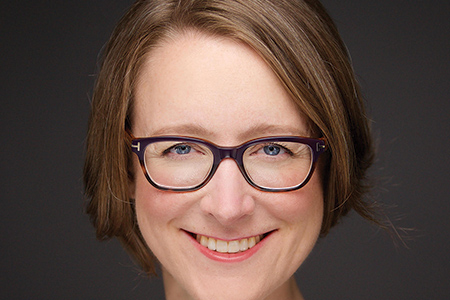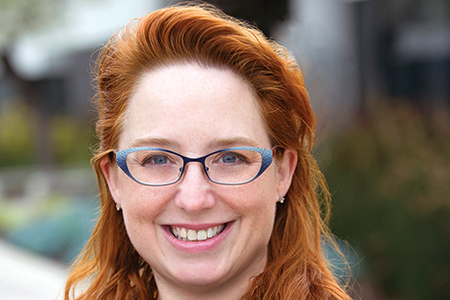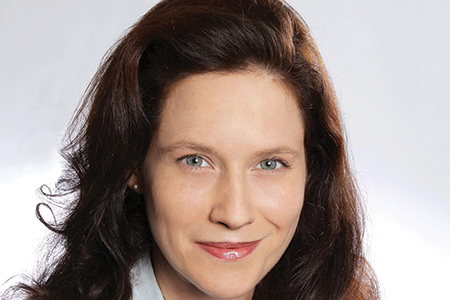The Ins And Outs Of Board Service: What We Now Know
By Shannon Dahl, Ph.D., Elizabeth Jeffords, and Stephanie Oestreich, Ph.D., MPA
 Twenty relative strangers stepped into a conference room at George Washington University (GWU) with one goal: learn as much as they could about board directorships in order to better serve as future board members.
Twenty relative strangers stepped into a conference room at George Washington University (GWU) with one goal: learn as much as they could about board directorships in order to better serve as future board members.
What we took away went deep into the “must-knows” before joining a board: pivotal case studies of board situations gone wrong, and advanced career-building knowledge that was applicable both in and outside of the boardroom.
 IT ALMOST ALWAYS COMES DOWN TO YOUR NETWORK
IT ALMOST ALWAYS COMES DOWN TO YOUR NETWORK
The women who are a part of Executive Women In Bio’s Boardroom Ready program are selected because they are already qualified to sit on corporate boards but may lack the network or the activation energy to get them there. The program addressed expanding individual networks in a variety of ways.  First and foremost was establishing oneself as an alumna of the program, which now has seen 80 executive women complete the course. Surrounding the alumna network are countless mentors and dozens of corporate sponsors who have made it clear that they are there to help.
First and foremost was establishing oneself as an alumna of the program, which now has seen 80 executive women complete the course. Surrounding the alumna network are countless mentors and dozens of corporate sponsors who have made it clear that they are there to help.
To highlight the importance of building a diverse and multifaceted network, GWU brought in Andy Cohen, Ph.D., director of MBA programs and adjunct professor of management, who teaches organizational behavior, leadership, and social networks. One of the items he addressed was being the connection between two unrelated parties, even if there is very little in it for you. This focus on helping other women permeated the program. But helping other women is not purely philanthropic. Connecting two members of your network could then strengthen and build your own credibility even if you don’t directly or immediately benefit from the introduction. These cross-network connections can vastly enhance the resources available to you when looking for board positions.
While expanding and growing networks can be beneficial, one panel during the course included past program participants who emphasized utilizing the connections of one’s immediate network. For example, program alumnae Shehnaaz Suliman, MD, and Karah Parschauer, JD, told us their story. Because of their affiliation with the program and each other, Parschauer felt that Suliman would be a good fit for an open board directorship at her company, Ultragenyx Pharmaceuticals. With Parschauer advocating and connecting Shehnaaz with her network, Suliman interviewed, evaluated the opportunity, and secured her position as member of the board. Suliman was then later able to help Parschauer achieve her first board position as well.
After reinforcing the need for a strong network, the next step communicated throughout the course was to use that network to amplify your goals. The best way to do that: Tell people what you are looking for and what value you can add to a company.
THE CHECKLISTS
We all know some boards are better than others, but when it comes to evaluating the merits and potential pitfalls of joining any particular board, the details seemed fairly nebulous and somewhat daunting. What was provided to us throughout the Boardroom Ready course was a clear process that took much of the guesswork out of selecting the right board. Some speakers even went so far as to provide an actual checklist of items to review before agreeing to sit on any board.
One item to always explore is the extent of insurance the company provides for its directors. Being a director, particularly of public companies, can mean you take on considerable risk and potential liability for situations that may arise within a company. You want to be sure you are protected should someone decide the board is at fault.
Of course, the financial health of the company is a critical point to assess, but we were all a bit surprised by the depth of financial forensics our mentors suggest we undertake. Prior to the program, there would have been a tendency to focus on a company’s general development strategy, strategic planning, management teams, cash on hand, cap tables, and risks. Patricia Fairfield, Ph.D., associate professor, McDonough School of Business at Georgetown University, however, said there is much to learn from a company’s deeper numbers. She walked us through several examples of earnings releases and company financials, calling out trends or items to focus on to determine the real economic health and trajectory of a company.
For example, Fairfield shared a case study where one company had an increase in revenue but surplus in inventory year over year. Because revenue was continuing to increase, no one paid much attention to the inventory discrepancies, but the company was eventually caught committing fraud. These sorts of financial insights are not only valuable when assessing a board to join but are also extremely helpful in making sure, as a board member, you are helping to address any red flags that may arise throughout your service.
BEYOND THE BOARDROOM
The course was ripe with transferrable knowledge that could be applied to many aspects of a career as a life science leader. While important to board service, the topic of cybersecurity had most of us thinking about how to ensure our own companies were as secure and prepared as possible for this emerging and growing threat to corporations.
In addition to the expert speakers during the course, it quickly became evident that the women participating in the cohort were bringing their own unique skill sets and experiences that could be shared with the group. Throughout our time together, we have all been able to glean information on everything from improving fundraising tactics, aspects of working at or with an international corporation versus a U.S.-based company, and things to watch out for with taxes related to board compensation, to how to negotiate for yourself in both career moves and board placements. Having this resource of like-minded peers and new friends to draw from as we each progress through our careers is, hands down, one of the biggest benefits of participating in the Boardroom Ready program.
Participating in Executive Women In Bio’s Boardroom Ready program provided us with new perspective, a depth of knowledge, and 19 new friends and colleagues.
SHANNON DAHL, PH.D., is chief scientific officer at Cell Care Therapeutics. She is a company builder and R&D leader in biologics and cell and gene therapy. She defines a clear path forward from discovery to commercialization while delivering product strategies and regulatory and reimbursement solutions.
ELIZABETH JEFFORDS is chief commercial and strategy officer for Alkahest and has more than 20 years of experience in life sciences in global commercial, access, communications, and development roles across oncology, neurology, ophthalmology, genomics, and women’s health.
STEPHANIE OESTREICH, PH.D., MPA, is EVP, is head of BRIDGEs partnerships North America and Asia at Evotec. She has more than 15 years of international marketing and business development experience with proven strategic agility and executional excellence across a broad range of therapy areas and geographies.
